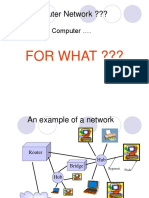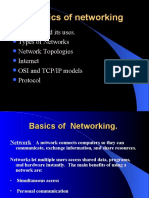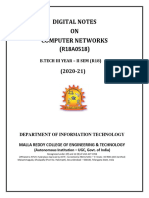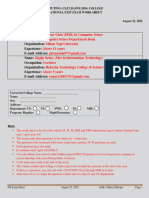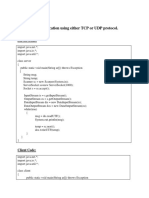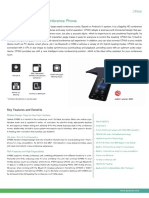0% found this document useful (0 votes)
10 views2 pagesNetworking
The document provides a comprehensive overview of computer networking, defining key concepts such as types of networks (LAN, WAN, MAN, PAN) and the OSI and TCP/IP models. It also discusses essential networking devices like routers, switches, and modems, along with important protocols such as TCP, UDP, and IP. Additionally, it covers network topologies, including star, bus, ring, and mesh configurations.
Uploaded by
dawire3808Copyright
© © All Rights Reserved
We take content rights seriously. If you suspect this is your content, claim it here.
Available Formats
Download as TXT, PDF, TXT or read online on Scribd
0% found this document useful (0 votes)
10 views2 pagesNetworking
The document provides a comprehensive overview of computer networking, defining key concepts such as types of networks (LAN, WAN, MAN, PAN) and the OSI and TCP/IP models. It also discusses essential networking devices like routers, switches, and modems, along with important protocols such as TCP, UDP, and IP. Additionally, it covers network topologies, including star, bus, ring, and mesh configurations.
Uploaded by
dawire3808Copyright
© © All Rights Reserved
We take content rights seriously. If you suspect this is your content, claim it here.
Available Formats
Download as TXT, PDF, TXT or read online on Scribd
/ 2




